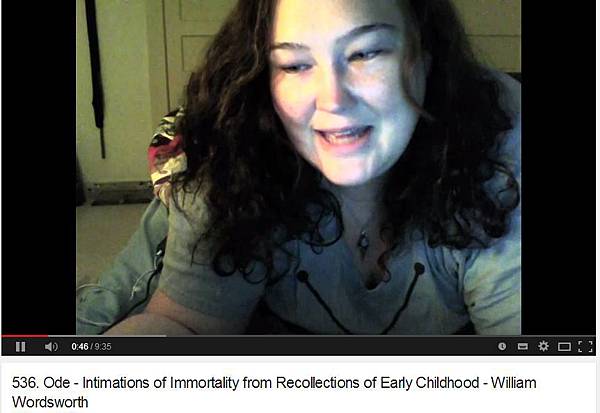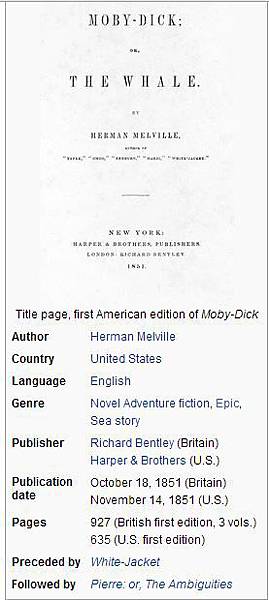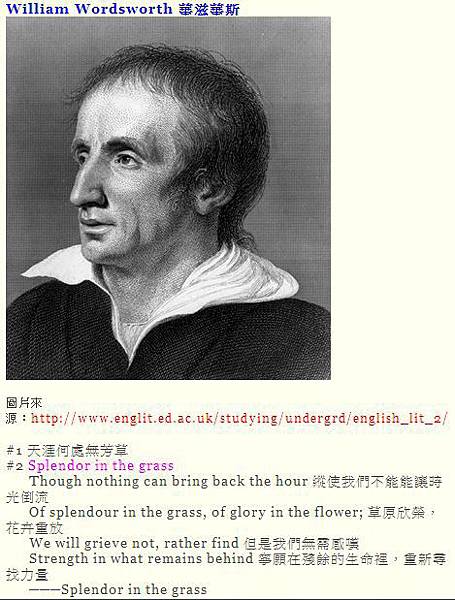index finger食指
The index finger, (also referred to as forefinger, pointer finger, trigger finger, digitus secundus, digitus II, andmany other terms), is the first finger and the second digit of a human hand.
Intimations of immortality from early childhood , Wordsworth,William.點入內有英文

https://www.youtube.com/watch?v=mDPJ63OUm9o
Ode: Intimations of Immortality from Recollections of Early Childhood (also known as Ode, Immortality Ode or Great Ode) is a poem by William Wordsworth, completed in 1804 and published in Poems, in Two Volumes (1807). The poem was completed in two parts, with the first four stanzas written among a series of poems composed in 1802 about childhood. The first part of the poem was completed on 27 March 1802 and a copy was provided to Wordsworth's friend and fellow poet, Samuel Taylor Coleridge, who responded with his own poem, Dejection: An Ode, in April. The fourth stanza of the ode ends with a question, and Wordsworth was finally able to answer it with 7 additional stanzas completed in early 1804. It was first printed asOde in 1807, and it was not until 1815 that it was edited and reworked to the version that is currently known, Ode: Intimations of Immortality.
The poem is an irregular Pindaric ode in 11 stanzas that combines aspects of Coleridge's Conversation poems, the religious sentiments of the Bible and the works of Saint Augustine, and aspects of the elegiac and apocalyptic traditions. It is split into three movements: the first of 4 stanzas discusses concerns about lost vision, the second of 4 stanzas describes how age causes man to lose sight of the divine, and the third of 3 stanzas is hopeful in that the memory of the divine allows us to sympathise with our fellow man. The poem relies on the concept of Pre-existence, the idea that the soul existed before the body, to connect children with the ability to witness the divine within nature. As children mature, they become more worldly and lose this divine vision, and the ode reveals Wordsworth's understanding of psychological development that is also found in his poemsThe Prelude and Tintern Abbey. Wordsworth's praise of the child as the "best philosopher" was criticised by Coleridge and became the source of later critical discussion.
在浪漫時期,最有名的句子:
Though nothing can bring back the hour of splendor in the grass(第182行)
1961年有一部電影,當時為年輕人性壓抑的電影,有教化的功能,是"在不對的時間做不對的事"
考ID喔:
 Free Verse ---口語化,又稱白話文詩,句尾有押韻、兩句一組
Free Verse ---口語化,又稱白話文詩,句尾有押韻、兩句一組
Free verse is an open form (see Poetry analysis) of poetry. It does not use consistent meter patterns, rhyme, or any other musical pattern. It thus tends to follow the rhythm of natural speech.[1]
Form and structure[edit]
Although free verse requires no meter, rhyme, or other traditional poetic techniques, a poet can still use them to create some sense of structure. A clear example of this can be found in Walt Whitman's poems, where he repeats certain phrases and uses commas to create both a rhythm and structure. Much pattern and discipline is to be found in free verse: the internal pattern of sounds, the choice of exact words, and the effect of associations give free verse its beauty.[13] With the Imagists free verse became a discipline and acquired status as a legitimate poetic form.[14] Herbert Read however, noting that 'the Imagist Ezra Pound gave free verse its musical structure to an extent that parodoxically it was no longer free'.[15]
Because of a lack of predetermined form, free verse poems have the potential to take truly unique shapes. Unrestrained by traditional boundaries, Yvor Winters described this as 'attempts to widen experience by establishing 'abnormal' conventions',[7] the poet possesses more license to express, and has more control over the development of the poem. This could allow for a more spontaneous and individualized product.
ex. O captain my captain (Dearl Poeats sourty)
"O Captain! My Captain!" is an extended metaphor poem written in 1865 by Walt Whitman, about the death of American president Abraham Lincoln. The poem was first published in the pamphlet Sequel to Drum-Taps which assembled 18 poems regarding the American Civil War, including another Lincoln elegy, When Lilacs Last in the Dooryard Bloom'd. It was included in Whitman's comprehensive collection Leaves of Grass beginning with its fourth edition published in 1867.
Text[edit]
anchor是下錨的意思
heroic complet
A heroic couplet is a traditional form for English poetry, commonly used in epic and narrative poetry; it refers to poems constructed from a sequence of rhyming pairs of lines in iambic pentameter. Use of the heroic couplet was pioneered by Geoffrey Chaucer in the Legend of Good Women and the Canterbury Tales.,[1] and was perfected by John Dryden in the Restoration Age.
In English literature, an elegy is a mournful, melancholic or plaintive poem, especially a funeral song or a lament for the dead.
ex.
 Funeral Blues - Wystan Hugh Auden
Funeral Blues - Wystan Hugh Auden
Wystan Hugh Auden (1907-1973)
Funeral Blues (Song IX / from Two Songs for Hedli Anderson)
Stop all the clocks, cut off the telephone.
Prevent the dog from barking with a juicy bone,
Silence the pianos and with muffled drum
Bring out the coffin, let the mourners come.
Let aeroplanes circle moaning overhead
Scribbling in the sky the message He is Dead,
Put crêpe bows round the white necks of the public doves,
Let the traffic policemen wear black cotton gloves.
He was my North, my South, my East and West,
My working week and my Sunday rest
My noon, my midnight, my talk, my song;
I thought that love would last forever, I was wrong.
The stars are not wanted now; put out every one,
Pack up the moon and dismantle the sun.
Pour away the ocean and sweep up the wood;
For nothing now can ever come to any good.
<The Waste Land>荒園,最有名句子:(連結內有全文)
"The Waste Land", by T.S. Eliot, is widely regarded as "one of the most important poems of the 20th century" and a central text in Modernist poetry.[1][2] Published in 1922, the 434-line[B] poem first appeared in the United Kingdom in the October issue of The Criterion and in the United States in the November issue of The Dial. It was published in book form in December 1922. Among its famous phrases are "April is the cruellest month", "I will show you fear in a handful of dust", and the mantra in the Sanskrit language "Shantih shantih shantih".[C]
Eliot's poem loosely follows the legend of the Holy Grail and the Fisher King combined with vignettes of contemporary British society. Eliot employs many literary and cultural allusions from the Western canon, Buddhism and the HinduUpanishads. Because of this, critics and scholars regard the poem as obscure.[3] The poem shifts between voices of satire and prophecy featuring abrupt and unannounced changes of speaker, location and time and conjuring of a vast and dissonant range of cultures and literatures.
The poem's structure is divided into five sections. The first section, The Burial of the Dead introduces the diverse themes of disillusionment and despair. The second, A Game of Chess employs vignettes of several characters—alternating narrations—that address those themes experientially. The Fire Sermon, the third section, offers a philosophical meditation in relation to the imagery of death and views of self-denial in juxtaposition influenced by Augustine of Hippo and eastern religions. After a fourth section that includes a brief lyrical petition, the culminating fifth section, What the Thunder Saidconcludes with an image of judgment.
 April is cruellest month of the year
April is cruellest month of the year
內文提到紫丁香花
bury of the death
Bury the Dead
Bury the Dead (1936) is an expressionist anti-war drama by the American playwright Irwin Shaw. It dramatises the refusal of six dead soldiers during an unspecified war—who represent a cross-section of American society—to be buried. Each rises from the grave to express his anguish, the futility of war, and his refusal to become part of the "glorious past" to the woman who has survived him. It was first staged in New York in 1936 to great acclaim.
 Realism
Realism
Realism is a school of International Relations theory. Realism, as described by Jonathan Haslam, professor of history of international relations at the University of Cambridge, "is a spectrum of ideas"[1] which revolve around the four central propositions of Political Groupism, Egoism, International anarchy and Power politics.[2] Theories of political realism originated through the works of Thomas Hobbes and Niccolò Machiavelli, emerging as an International Relations based approach in theinter-war years of the 20th century.[1]
Naturalism was a literary movement or tendency from the 1880s to 1930s that used detailed realism to suggest that social conditions, heredity, and environment had inescapable force in shaping human character. It was a mainly unorganized literary movement that sought to depict believable everyday reality, as opposed to such movements as Romanticism or Surrealism, in which subjects may receive highly symbolic, idealistic or even supernatural treatment.
ex.Moby Dick

Moby-Dick; or, The Whale (1851) is a novel by Herman Melville, in which Ishmael narrates the monomaniacal quest ofAhab, captain of the whaler Pequod, for revenge on the albino sperm whale Moby Dick, which on a previous voyage destroyed Ahab's ship and severed his leg at the knee. Although the novel was a commercial failure and out of print at the time of the author's death in 1891, its reputation grew immensely during the twentieth century. D. H. Lawrence called it "one of the strangest and most wonderful books in the world," and "the greatest book of the sea ever written."[1] Moby-Dickis considered a Great American Novel and an outstanding work of the Romantic period in America and the American Renaissance. "Call me Ishmael" is one of world literature's most famous opening sentences.
The product of a year and a half of writing, the book is dedicated to Nathaniel Hawthorne, "in token of my admiration for his genius," and draws on Melville's experience at sea, on his reading in whaling literature, and on literary inspirations such as Shakespeare and the Bible. The detailed and realistic descriptions of whale hunting and of extracting whale oil, as well as life aboard ship among a culturally diverse crew, are mixed with exploration of class and social status, good and evil, and the existence of God. In addition to narrative prose, Melville uses styles and literary devices ranging from songs, poetry and catalogs to Shakespearean stage directions, soliloquies and asides.
The author changed the title at the very last moment in September 1851. The work first appeared as The Whale in London in October 1851, and then under its definitive title Moby-Dick in New York in November. The whale, however, appears in both the London and New York editions as "Moby Dick," with no hyphen.[2] The British edition of five hundred copies was not reprinted during the author's life, the American of almost three thousand was reprinted three times at approximately 250 copies, the last reprinting in 1871. These figures are exaggerated because three hundred copies were destroyed in a fire at Harper's; only 3,200 copies were actually sold during the author's life.
 許多詩或童話中都有phallic symbol陽具崇拜----例如長髮公主中的高塔
許多詩或童話中都有phallic symbol陽具崇拜----例如長髮公主中的高塔
A phallic symbol (a. k. a. "lingam") is any cylindrical object that, by any stretch of the imagination, may be construed as representing a penis, whether flaccid or erect. One of the most famous of such symbols was the cigar that Sigmund Freud, psychoanalinguist and popluarizer of the "phallic stage" of male adolescent development, during which boys discover that they are different than girls and envy the opposite sex's sleek, "unobtrusive" look, kept always at hand or mouth. Freud was seldom seen without his cigar, which he said, with a wink, was "just a cigar."

